Birding in Bed (with a little help from YCN)...
Part One – The how, why, where and when of Nocmig
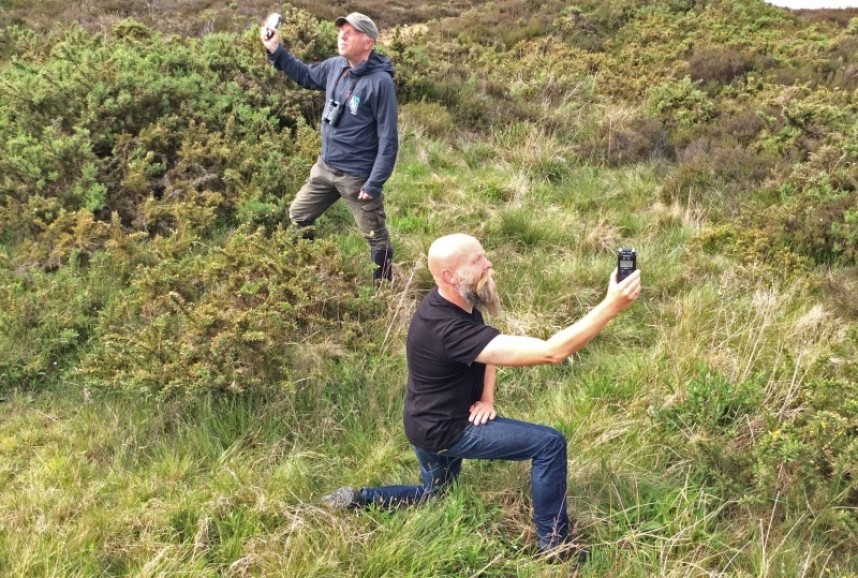
Rich and Mark model the YCN recorders (and demonstrate how not to do Nocmig) © Jo Ruth
It all began just over a year ago, at the end of March 2020, just as the first lockdown began, and the ground was metaphorically shuddering under our collective feet (is there a Richter scale for impending existentialist doom?). The future was uncertain, restrictions were tightening, and – even with the benefits of living here in Filey - it was time to get more creative with domestic natural history kicks.
Common Scoters (preceded by Common Toads!) recorded migrating over Filey North Cliff a couple of weeks ago
Reports of nocturnally migrating Common Scoters heading west overland - audibly and invisibly, from the Irish Sea and over Yorkshire - were a welcome distraction from the rolling doom-scroll of pandemic bad news, and while brushing my teeth in our bathroom here in downtown Filey late on the 31st, I heard a loud, clear, alien beep-beeping up in the inky blackness through the open window: Common Scoters, doubtless extra-vocal at the sound, sense and smell of the North Sea just metres away, skimming the chimney pots of our urban alley! Magical....
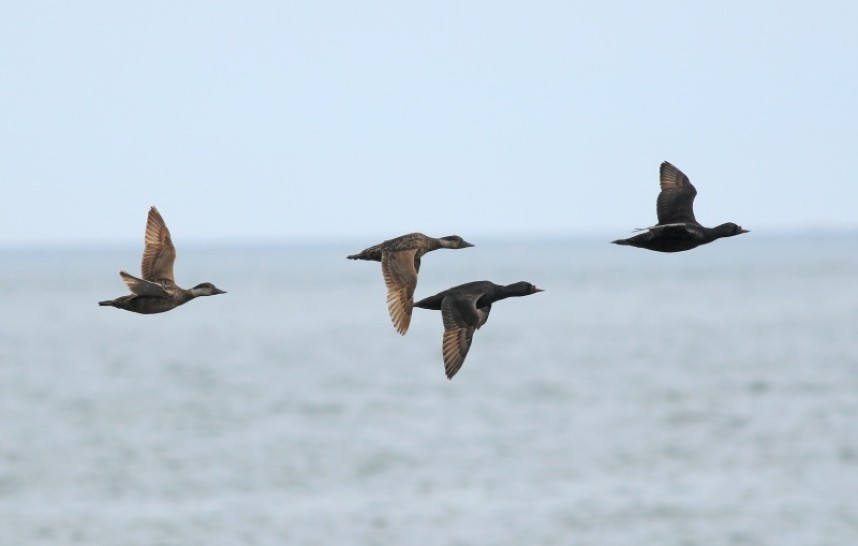
… and a flock offshore in the daytime © Mark Pearson
…. and just the starting pistol I needed to get into nocturnal migration sound recording (or nocmig for short). I'd wanted to try it for some time, but various reasons - a lack of garden, a lack of time, a lack of a quiet enough recording location, and a lack of professional gear - had dissuaded me; until they were suddenly outweighed by a 'screw it, it's got to be worth a shot' approach, which turned out to be one of the better turning points of Spring 2020.
Curlews are a regular nocturnal migrant, especially in spring and autumn
As I write (in the second week of April '21), I've just finished analysing last night's nocmig recordings, and with mercifully lighter winds than of late, it was great to clock the rows of inverted little black commas that constitute multiple flocks of Common Scoters on the sonograms from my two Filey recorders; I'm looking forward to analysing my recording from Flamborough, too, which may well provide a Scoter clean sweep for last night.
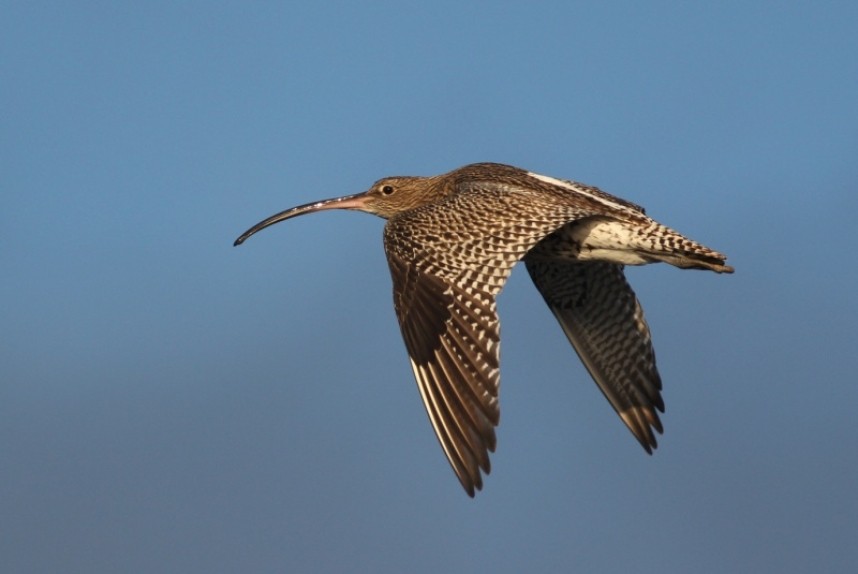
Eurasian Curlew © Mark Pearson
Yep, that's three seperate recorders employed, all thanks to Yorkshire Coast Nature, and a conversation Rich and I had back in late spring last year. I was recording nocmig from my house here in downtown Filey – an exclusively urbanised area, with the recorder jammed into the partially-opened study window and into the back alley – and after a couple of months, I'd been getting great results, with far better species diversity and abundance than I'd anticipated.
So far, so good - but while there are a great many advantages to living where we do, the fact that it's smack bang in the middle of a thriving, ear-splittingly animated Herring Gull colony isn't necessarily one of them; and by late spring, the war was effectively already won, and I was on the losing side. I mentioned to Rich my intention to admit temporary defeat and look at other locations, and he immediately suggested employing the YCN recorders, meaning I could spread the nocmig love along my local stretch of the Yorkshire coast – game on!
A flock of Snipe migrating over the back alley here in Filey town overnight last autumn...
By the middle of the year, then, I'd three or more local nocmig sites on the go: one in a field at Filey North Cliff, north of the town (and, ironically for a location nearer the cliffs, away from the noise of a Herring Gull colony); one in my mum's garden a few miles down the coast in Flamborough village; the one from the study window (at least when doable, more so as summer wore on); and a fourth as a super-sub, coming on for extra time at local wetlands and the like.
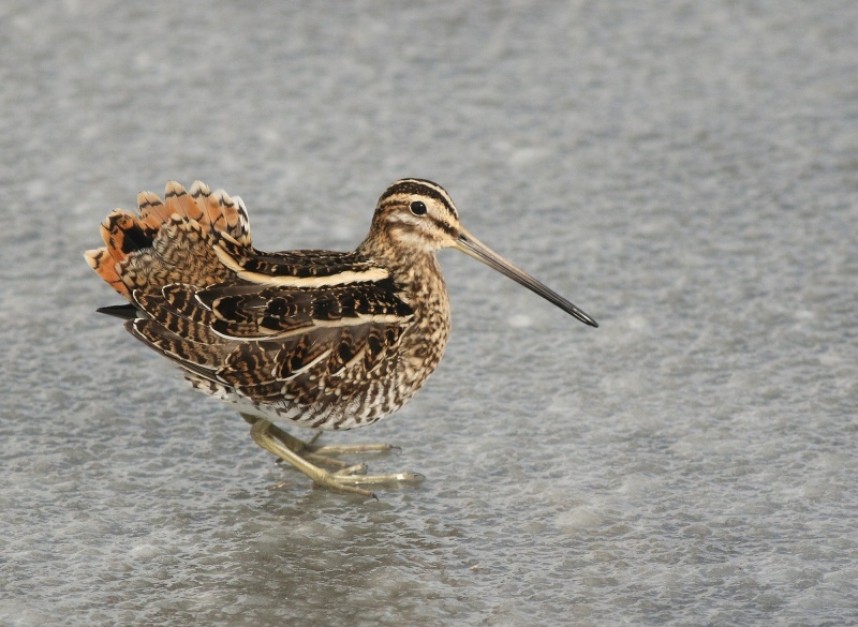
…. and one nearby in the daytime © Mark Pearson
Which may sound like overkill, but with some careful time management and improving skills (and therefore the ability to rifle through the sonograms quicker), it was anything but a trial; in fact, it was a real joy, with the thrill of 'opening up' the previous night's sonograms like Roy Wood's ad nauseum Christmas wish come true.
Each site has its positives and negatives – proximity to the coast / wetlands / valleys (or a gull colony), topographical position, etc - but the great thing about nocmig is, ultimately, anywhere will do, as long as it's not too overwhelmed with night-time noise pollution. We weren't the only ones to take it up last spring, and while the novelty may have worn off for some, many have embraced the joys of nocmig longer term, and many more have joined the fun this spring. It's a wonderfully non-exclusive, playing field-levelling aspect of enjoying what is, in bird migration, a magical and mysterious melodrama.
In simple terms, then, nocmig is the recording the calls of birds migrating overhead at night, with a device of your choice. There's an endless variety of gear to choose from, depending on budget, location, commitment, circumstances and other variables, but in a nutshell, all you need is a microphone to pick up the sounds, a recording device to recieve them, and a computer and headphones to analyse them.
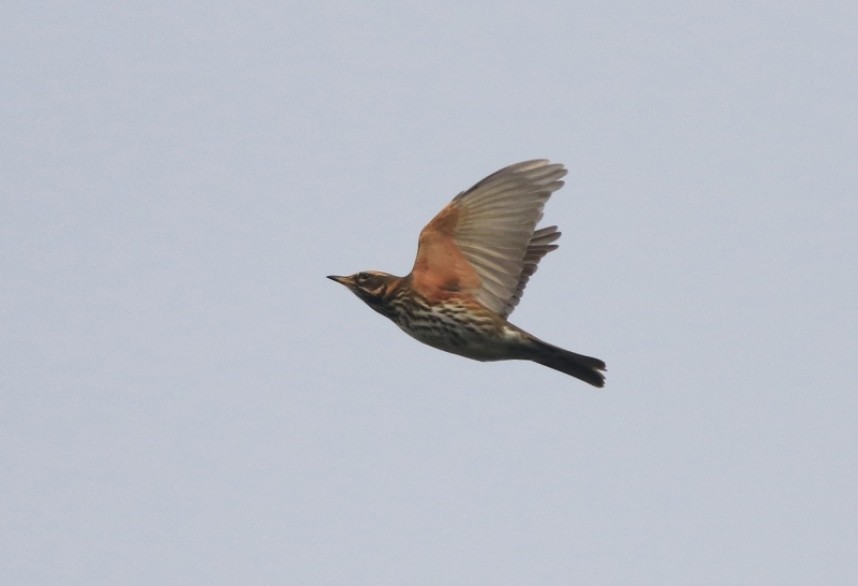
'Redwings are the most numerous and vocal of all nocmig passerines locally © Mark Pearson
For example, my very modest, very basic set-up at the house has provided me with a mind-blowing insight into bird migration over our rooftop, with an amazing variety of species and many an amazing night of passage over my sleeping head - and yet it's cheap and cheerful at best. I use a small, hand-held sound recorder with built-in microphones, which I partially cushion with bubble wrap and place in a small, clear plastic bag (to keep out the elements) and then trap in the gap of an open window.
I then download the night's recording onto my laptop, open it with Audacity (a free software program), set it so I'm viewing about 30 seconds of the recording on the screen at a time, and scroll through, stopping to look and listen at any interesting shapes and squiggles. Even within a month or two you'll learn to recognise many commoner species just by the shape of their call, and after a year, we're at a point where the majority of calls are recognisable (making analysing much quicker too!).
It's been an amazing first year, and although we're still very much enthusiastic amateurs, the learning curve has been steep and entertaining, and has the bonus side-effect of spilling over into and improving my more traditional birding techniques; on top of that, it's uncovered a whole new dimension of local bird migration, and our understanding and appreciation of it - and when you open up the file the following morning, who knows what you'll find.....
In part two (to follow shortly) we'll take a look at look at the amazing variety of birds involved, and the many, many highlights of this first year's sonic journey into the ether.....
YCN Birding/Wildlife Guide
For those who want to give it a go (and I'd recommend it to everyone), here's some useful links and resources:
For a great how-to guide (equipment, setting up analysis software, pitfalls etc.) the Nocmig website is a must
For a perfect introduction to nocmig and how to get started, watch Simon Gilling's BTO talk here
For a (significantly less professional!) introduction into nocmig from a beginner's perspective, see my Migweek talk here
For a deeper dive into this magical world, and for pioneering ID discoveries and tips, visit the Sound Approach website here
For regular summaries of my nocmig adventures, see the blog here



 Back to Blog
Back to Blog
